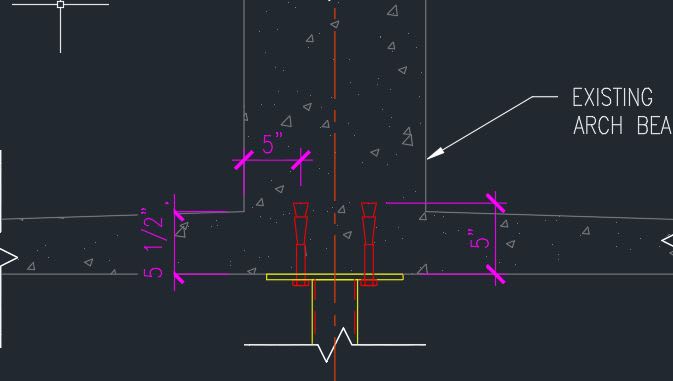MNach
Structural
- Jan 30, 2015
- 18
I am using HDA-T anchors (4.9” embed roughly) and they are going into a concrete arched beam (16” wide, 3’+ deep). The ceiling is also concrete (integral with beam). Being conservative, I am using an edge distance of 5”, but I am pushing the capacities of these anchors above their limits doing so. Do you see any issues with not using 5” as an edge distance here? Does anyone have any recommendations on determining the actual capacities of the anchors in this situation? The cone of failure would make a full circle, the concrete can’t exactly blow out on the side since there is also concrete there. I feel as though this reduced section at the ceiling may have some effect but not as much as calling it an the edge of the concrete would.

***anchors are not drawn to scale

***anchors are not drawn to scale
